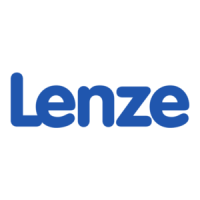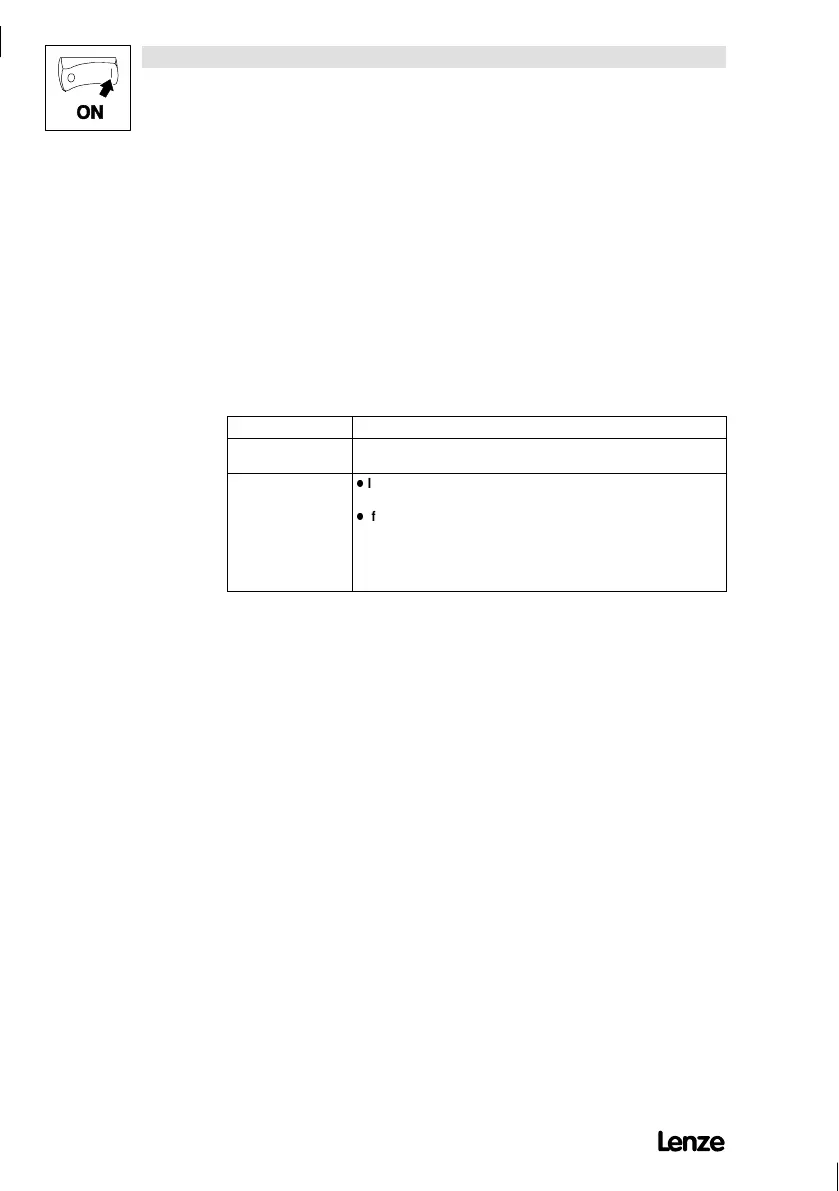Commissioning
5-12 821XKlimaBA0399
5.5 Operation with the PID controller
The following controls can be implemented with the internal process controller:
- Pressure
- Temperature
- Flow
- Humidity
- Speed
- Dancer-position.
Settings
Configuration Set C005 -6- or -7- for controlled operation with a PIDcontroller.
Setpoint The setpoint can be set via terminal 8 or terminal E1. The terminal not
used for setpoint selection is used for the feedback.
Terminal E1
-
If you use the ”analog plug-in module 8279” terminal E1 will be used
as 2nd analog input (0 ... 10 V / 4 ... 20 mA).
-
If you do not use the ”analog plug-in module 8279”, terminal E1
canbeusedas
digital
input.
Pulse frequency 0 ... 10
kHz with 15
Vlevel:
0..3V=LOW
12 ... 30V = HIGH
The codes C070 to C072 are especiallyfor parameter setting of the PID controller (see Code
table).
In addition, the influence of the PID controller can be set under C074. Under C238 you can select
whether you want a setpoint precontrol or not. This is very advantageous for applications in which
the setpoint signal is directly proportional to the drive speed. Thus it is possible to limit the
influence of the PIDcontroller, such that only the maximum expectable slip of the machine will be
compensated.
The actual value of the PID controller is displayed under C051. The PID controller setpoint is
displayed in C046 or C049.
The control range can be limited by adjusting the analog inputs (C026, C027 for terminal 8;
C426, C427 forterm. E1 with plug-in module 8279).
The setpoint of the PID controller can be entered under C181 (software). This can be used, for
instance in pressure controls, to determine the pressure setpoint.
The I-component of the controller can be reset when reading the Q
min
threshold (C017)to
suppress the initial conditions because of the missing actual value.

